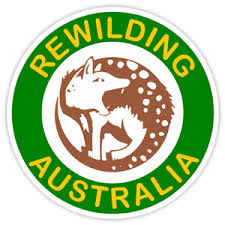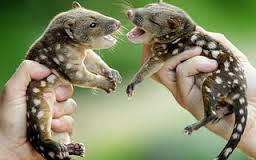When I was a child I lived in suburban Melbourne. Our house backed onto a railway line, and I could tell the time by the trains. Our back gate opened onto a broad, shady laneway and wild paddocks lay between it and the tracks. A canal, where I wasn’t supposed to play, flowed past the end of the lane.
 That was decades ago now, and the overgrown paddocks and canal are long gone. Yet I still recall each detail of that special world. Waiting for the spotty, stone-coloured eggs of the purple swamp hens to hatch. Collecting handsome emperor gum caterpillars, resplendent in emerald coats and bright red standards. Raising them on leafy sprigs kept in jars of water until they spun cocoons and emerged as moths as large as my hand. Stalking the handsome water skinks, which when startled, would spring into the water and swim away with sinuous grace. I knew some of them by name, telling them apart by a distinctive stripe here, or a missing toe there. The heartfelt connection I formed with the natural world has lasted me a lifetime. It caused me to seek out wild places, and for the last thirty years I’ve lived on a hilltop overlooking the beautiful Bunyip State forest.
That was decades ago now, and the overgrown paddocks and canal are long gone. Yet I still recall each detail of that special world. Waiting for the spotty, stone-coloured eggs of the purple swamp hens to hatch. Collecting handsome emperor gum caterpillars, resplendent in emerald coats and bright red standards. Raising them on leafy sprigs kept in jars of water until they spun cocoons and emerged as moths as large as my hand. Stalking the handsome water skinks, which when startled, would spring into the water and swim away with sinuous grace. I knew some of them by name, telling them apart by a distinctive stripe here, or a missing toe there. The heartfelt connection I formed with the natural world has lasted me a lifetime. It caused me to seek out wild places, and for the last thirty years I’ve lived on a hilltop overlooking the beautiful Bunyip State forest.
As a keen amateur naturalist, I’m fascinated by the notion of rewilding – restoring flora and fauna to their historical range. The theory has gained popularity after conservation success stories such as bringing wolves back to Yellowstone National Park and the large-scale return of Europe’s apex predators like lynx, bears and wolverines.

Zealandia Sanctuary
New Zealand provides a shining example. It is restoring Wellington’s former water catchment to forest. The sanctuary known as Zealandia, is an ecological island in the centre of the city, and home to some of the country’s rarest species. Now an important tourist attraction, it’s responsible for increased sightings of birds like tui and the endangered kaka in surrounding suburbs.
Australia is beginning to embrace rewilding. Quolls, bilbies, bandicoots and bettongs are being returned to parts of their natural range. Plans are afoot to bring Tasmanian devils back to the mainland after a four-hundred-year absence. Many ecologists advocate reintroducing dingoes to control introduced pests like rabbits, cats and foxes – a concept I explore in my new novel, Journey’s End.
Yet rewilding isn’t restricted to sexy, large-scale conservation efforts. We can all play our part. Rewilding Australia founder, Rob Brewster, says ‘It’s about filling those vacant rock crevices, and hollow logs with the marsupials that evolved over millions of years to fill these niches. It’s about acknowledging that the world should be a wilder place – and that humankind merely shares a spot in this wild world!’
 And it can start in our own backyard. Wildscaping is the new gardening buzzword for mingling layers of native trees, shrubs and ground cover. Throw in a pond, a rock wall and a nesting box or two. This provides shelter and foraging areas for species that prefer different heights and micro-habitats. Then sit back and watch the garden come to life. Even pots of natives on a balcony provide vital habitat. Nature wins by growing stronger and more diverse. We win by reconnecting in a small way with the earth. Imagine local communities wildscaping schools, railway corridors, vacant lots and parks. Before long our urban landscapes could be transformed into thriving webs of life.
And it can start in our own backyard. Wildscaping is the new gardening buzzword for mingling layers of native trees, shrubs and ground cover. Throw in a pond, a rock wall and a nesting box or two. This provides shelter and foraging areas for species that prefer different heights and micro-habitats. Then sit back and watch the garden come to life. Even pots of natives on a balcony provide vital habitat. Nature wins by growing stronger and more diverse. We win by reconnecting in a small way with the earth. Imagine local communities wildscaping schools, railway corridors, vacant lots and parks. Before long our urban landscapes could be transformed into thriving webs of life.
I’m very fortunate, where I live. Yet many of us lead lives so far removed from nature, that we rarely even touch the earth. We delude ourselves that we are somehow immune to and separate from the natural world. But at what cost? The cost to our declining environment? The cost to our hearts? Rewilding isn’t just for our land. It’s a concept for our minds and spirits as well.

 When Sydney botanist Kim Sullivan and her husband inherit Journey’s End, a rundown farm high on the Great Eastern Escarpment, they dream of one day restoring it to its natural state. Ten years later however, Kim is tragically widowed. Selling up is the only practical option, so she and her children head to the mountains to organise the sale. The last thing Kim expects is for Journey’s End to cast its wild spell on them all.
When Sydney botanist Kim Sullivan and her husband inherit Journey’s End, a rundown farm high on the Great Eastern Escarpment, they dream of one day restoring it to its natural state. Ten years later however, Kim is tragically widowed. Selling up is the only practical option, so she and her children head to the mountains to organise the sale. The last thing Kim expects is for Journey’s End to cast its wild spell on them all.


